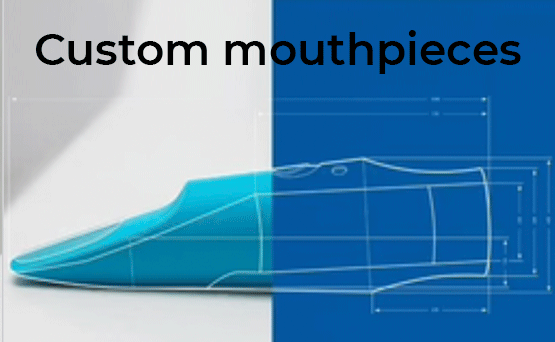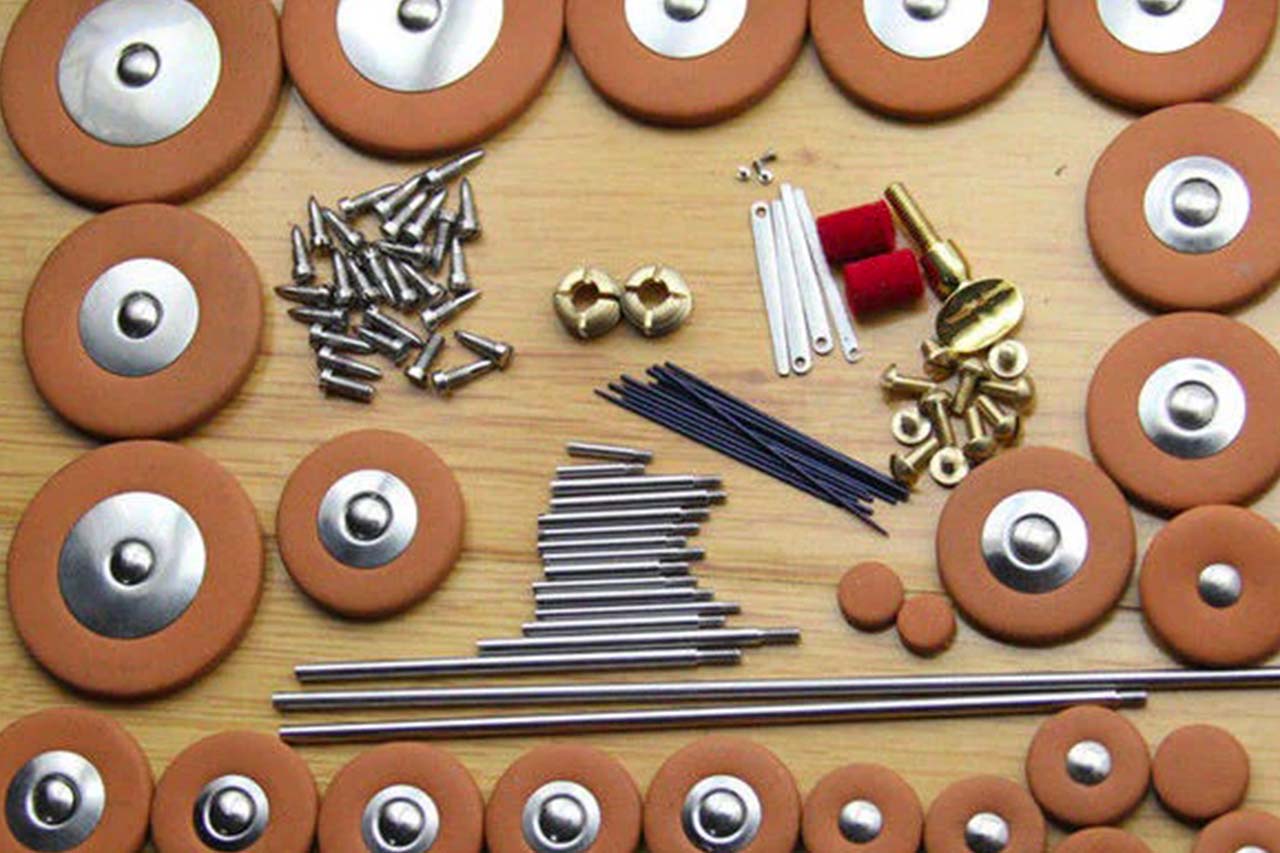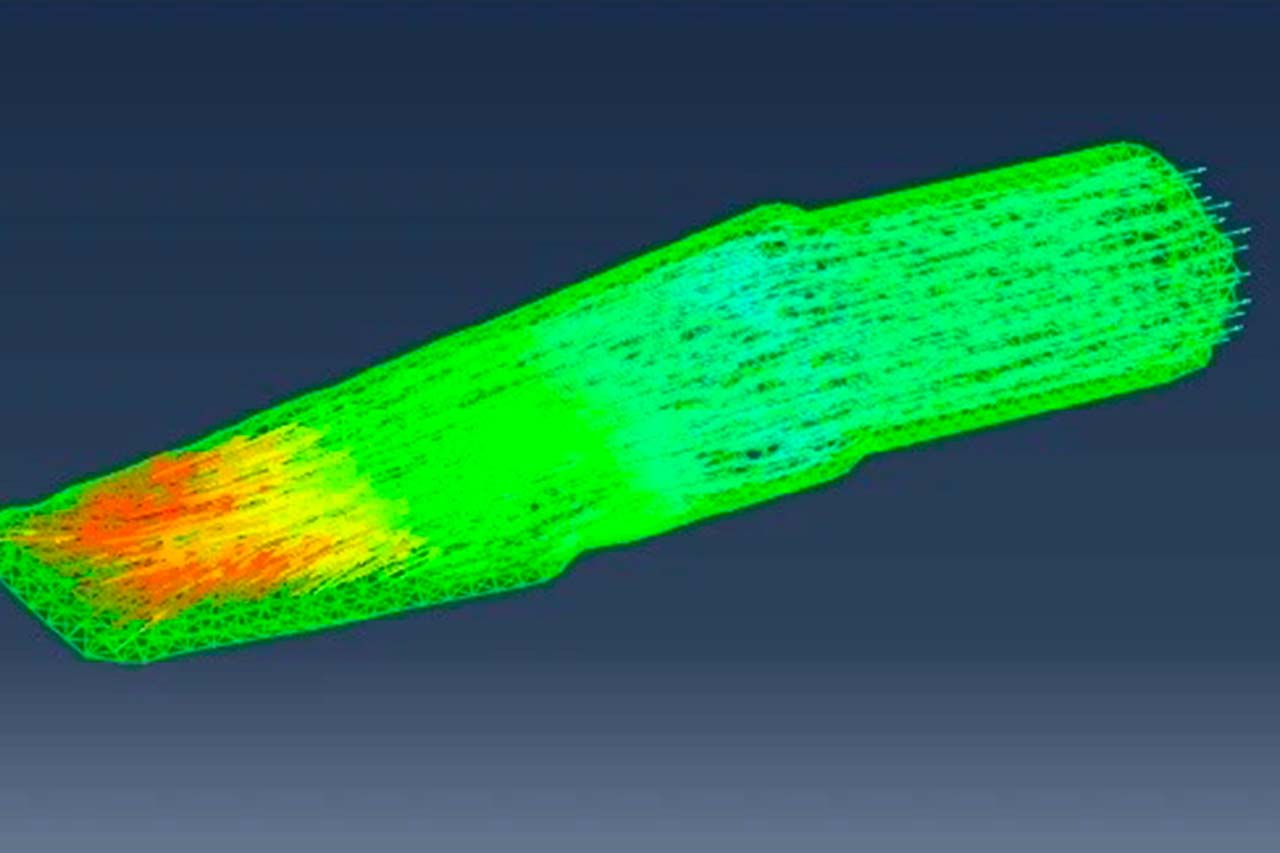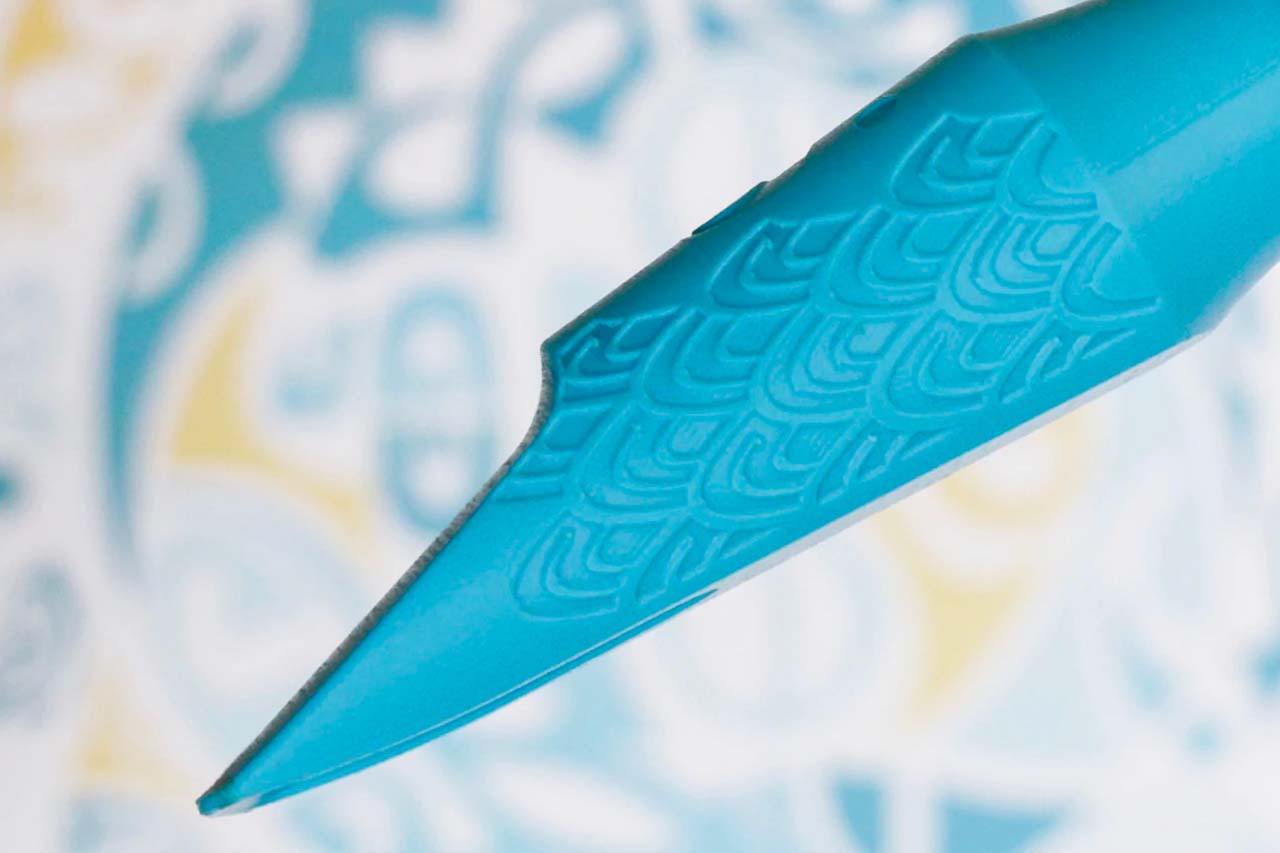Different notes can be played on woodwind instruments thanks to lateral holes which allow the musician to change the length of the air column. For all modern instruments, a complex system of keys, which open and close these holes, has been designed.
Pad resonators
A pad, mostly made of leather-covered cardboard, is glued to the inside of each key and acts as a seal to prevent air leakage. Sometimes, especially for the sax, a resonator is attached to the middle of the pad. Resonators can be of different shapes (flat, dome-shaped, waves ...) and they are made of various materials (plastic, copper, brass and even gold!). But what exactly is the role of these resonators?

Experimental measurement
To understand their role, we set up a little experiment. We measured the input impedance (read our article on Input impedance: an essential tool to understand wind instruments) of a cylindrical pipe sealed at the end with a key. We used three identical keys, each with a different pad: one with a metal resonator, one with a plastic resonator and the last without a resonator.

The figure above shows that the first impedance peak of the pipe closed by the pad without resonator is very low, which means that the pad absorbs a lot of acoustic energy. Pads with plastic and metal resonators have similar low frequency behavior: they reflect acoustic waves much more than the pad without a resonator.

We also measured the input impedance of the open pipe, holding the key open (see diagram above). We can see that the type of pad can also influence the impedance of the open pipe. However, this effect is particularly noticeable when the pad is very close to the end of the pipe.

The figure above shows us that the second and third peaks are dampened by the pad without resonator when it is at a distance of 1 mm from the end of the pipe. The pad without resonator therefore has an absorbent effect on high frequencies. However, in the case of a real instrument, a distance of 1 mm between the pad and the hole can only occur in transient states (when the hole is opening or closing).

The distance of 5mm in the figure above is much more representative of a real-life situation, when the key is at rest on the saxophone (open hole). In this case, the difference in input impedance between the three pads is much less obvious, but can still be detected.
Effect of resonators on input impedance
Now it is interesting to see the effect of the resonators on an entire saxophone. In this study we used four Yamaha YAS-480 saxophones with consecutive serial numbers. We first measured the input impedance of these saxophones that came directly from the factory and were equipped with plastic resonators. These measurements made it possible to verify that the four instruments were very similar since their impedances differed by less than 1 dB in amplitude and 5 cents in frequency, which is the order of magnitude of the limit accuracy obtained with the impedance measurement system used.
Then two saxophones (numbers 37 and 39) remained in their original condition (with plastic resonators) while the other two were equipped with new pads. The No. 38 saxophone was equipped with resonator-free pads while the No. 40 saxophone was fitted with pads with metal resonators.

We can see on the figure above that the saxophones are very similar, with the exception of saxophone #38 which has lower impedance peaks. This is consistent with the behavior highlighted above for non-resonator buffers on a cylindrical pipe. If we look closely, we can see that saxophone No. 38 has lower resonant frequencies than the resonant frequencies of the other three saxophones. The saxophones were previously equipped with resonators, so, by changing the original pads to those without resonators, the volume of the chimneys (when the holes are closed) is increased. This tends to lower the playing frequencies of the instrument. The amplitude is also lower by about 1 or 2 dB from the 4th impedance peak. Can we see differences for other fingerings? You can see the fingering of the F3, where about half of the side holes are closed. For this fingering, the resonance frequencies of the No. 38 saxophone are also lower than the other saxophones, but the differences are less obvious than for the Bb3. For the F5, where all the holes except one are open, there are almost no differences between the four saxophones. This shows that the effect of the pads is cumulative regarding the number of closed holes.
Conclusion
As a conclusion, it can be said that pad resonators have a measurable effect on saxophone acoustics. The reflection coefficient of the pad is increased by the presence of a resonator when the hole is closed and the amplitude of the impedance peaks of the saxophone is increased by several dBs. This effect is greater with more closed holes. From an acoustic point of view, the term "resonator" is misleading because the resonator does not vibrate, on the contrary, it tends to dampen the vibrations of the pad. A "resonator" could rather be called a "reflector".
And what do the musicians say? To find out, read the second part of this study: Pad Resonators - Influence on Sound Perception













